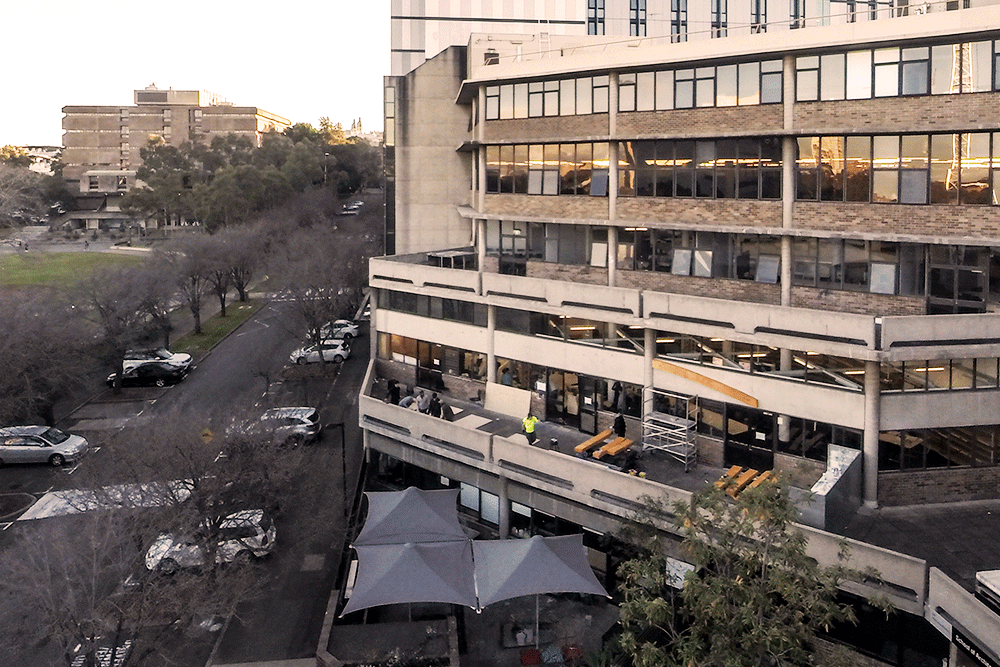
-
Architects: CodeToProduction, DTC
- Area: 45 m²
- Year: 2019
-
Photographs:Katherine Lu
-
Manufacturers: Carter Holt Harvey Plywood, KUKA|prc, Lamello AG Joining Technology, McNeel, OpenNest, Timber Plate Structures (TPS)
-
Lead Architects: Christopher Robeller, Eduardo De Oliveira Barata
-
Engineering: PMI Engineers, Thomas Williams

Text description provided by the architects. The HexBox Canopy is an experimental segmented timber shell, consisting of prefabricated hexagon-shaped boxes made from plywood plates. Since antiquity, arched spatial structures such as masonry vaults and domes have played a fundamental role in architecture, enabling the covering of wide spans without the use of intermediate supports as well as dramatically reducing the amount of required material.



Despite the advantages mentioned, the necessity of centering and formwork is an overwhelming drawback during the construction phase. The HexBox Canopy has accomplished the goal of exhibiting new ways of thinking about shell structures, exploiting the intrinsic features of engineered timber as well as taking advantage of smart geometry. This kind of structure minimizes support in the construction phase and allows for a high degree of prefabrication.

The design aims to devise not only a pavilion that demonstrates the advances of digital timber constructions, but the structure also provides a space for students to use for the entire day, shading them from the sun and rain, and respite from their computers. With 1531 timber segments making up 201 boxes, the HexBox shell is exclusively made of plywood components without the addition of any kind of metal fasteners for the main load-bearing structure. The major novelty is the wood-only connections between the boxes, which are made from the off-cuts produced after cutting the main plates of the structure.

These connectors are inspired by traditional tusk tenon-and-mortise joints, which is a smart and common method in handcrafted carpentry and cabinetmaking. Rather than attempting highly precise fabricated elements, the diagonal shape of wedges allows for the assembly of boxes even when there are small imperfections. Additionally, these joints gradually pull and force the boxes together, closing gaps between segments that may occur during assembly. The closing of such gaps is, in fact, critical for the overall precision and performance of the structure.

When working with a wide variety of shapes and elements, manual drawing and handmade cutting are out of the question. Instead, the HexBox project takes advantage of automated processes such as computational design and digital fabrication techniques. When it comes to the assembly, this can be simplified through integrated joints, where the position and alignment of parts result from their geometry. In the HexBox project, plates consisting of a structural module are glued together using a novel technique exploiting Lamello Tenso connectors that allow for the simple and safe 1K PUR adhesive to connect thousands of miter joints with individual dihedral angles. Right in the heart of Sydney within walking distance of Victoria Park, the HexBox stands on the terrace of the brutalist Wilkinson Building which houses the School of Architecture, Design, and Planning.

































